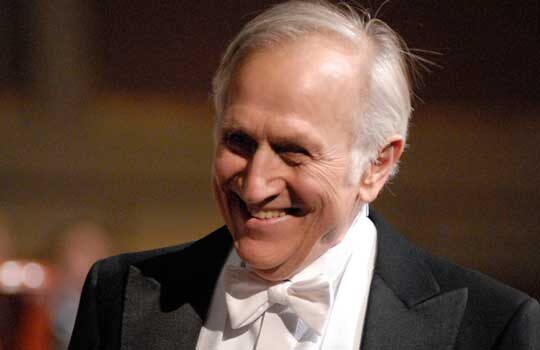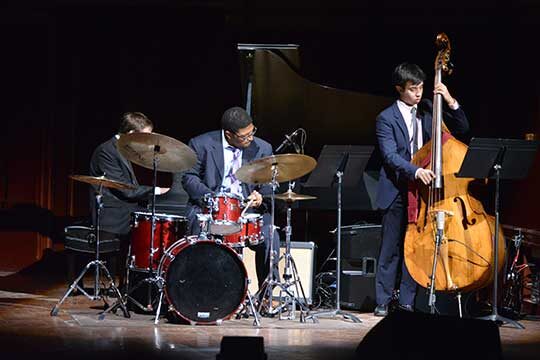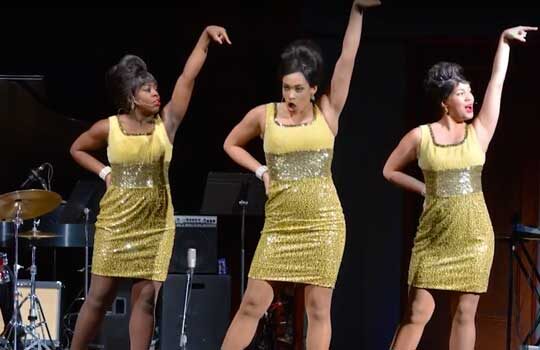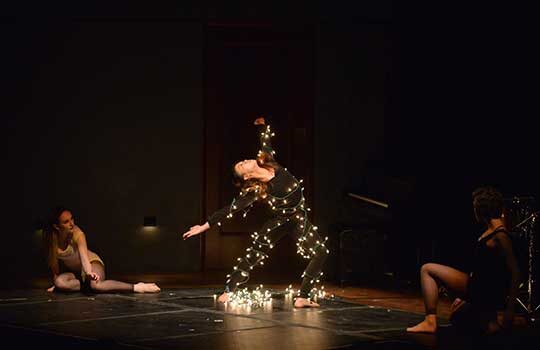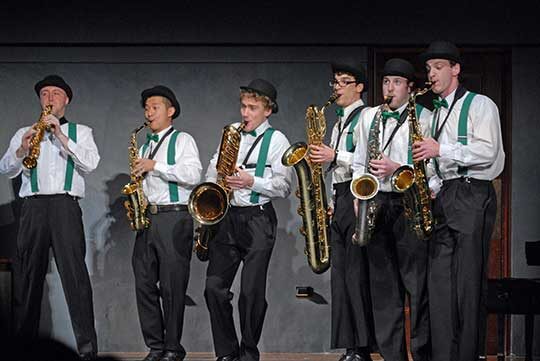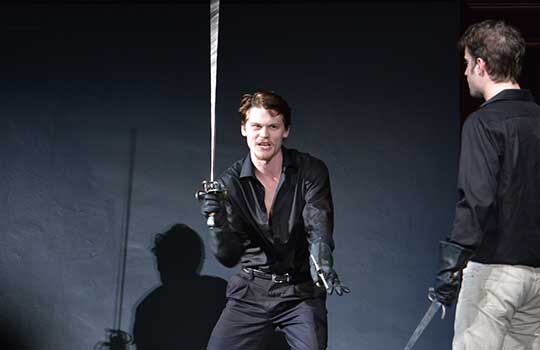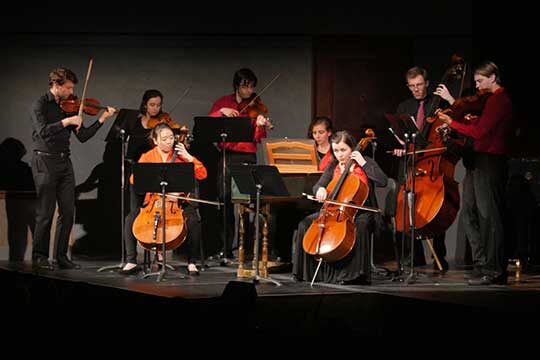Collage of talent
In 1977, the late conductor and music professor Gustav Meier debuted a novel performance concept featuring all periods and styles of music in which the last note of each work overlapped with the first note of the next. Collage is now a cherished tradition at the School of Music, Theatre & Dance (SMTD). The images below are culled from several past performances.
-
A study in antithesis
Meier first encountered the unique concert format at a 1975 performance in Brussels. He told an interviewer in 1980: “We were torn from the 20th century to the 17th century to the 19th, then back to the 15th century. We were all just stunned. It never occurred to me that such a programming technique could happen. What a contrast – old music, new music – so close together.“
-
An extravaganza
Collage was an instant hit at U-M. It has been one of SMTD’s most thrilling and popular presentations for four decades.
-
Save your applause
The format calls for rapid juxtaposition of musical styles and forms without the interruption of applause. Pieces are contrasted on the basis of composition period (old music versus new), scale (soloist versus band or orchestra versus small ensemble), or dynamic (quiet versus loud).
-
Bold statement
Over the years, the concert has evolved this recipe to also include music of every genre — orchestra, band, choir, chamber music, opera, jazz, electronica, pop, musical theatre, and more.
-
Represent
Dance and theatre also are included, creating a full spectrum performing arts extravaganza, in which every area of performance studies at SMTD is represented.
-
Turned on
Planning for Collage begins each September, with a different faculty conductor acting as artistic director each year. In October, a call for submissions goes out to the entire student body at SMTD, seeking the most distinctive repertoire. The show is presented in January.
-
Winded
In November, audition tapes are reviewed, “anchor” pieces for the large ensembles are chosen, and selections are made to create the most exciting and balanced variety of performances.
-
On the edge
The production itself is hugely challenging. Lighting can be complex, necessitating precise cues; sound engineering requires critical coordination; and stage management is carefully orchestrated to ensure that every body is exactly where it must be at every moment.
-
All hands!
Students working behind-the-scenes team up with highly skilled professional technicians to produce the daunting presentation, providing exceptional hands-on experience. Altogether, approximately 400 students, on stage and off, are involved in the collaborative production.
-
A celebration of virtuosity
Collage is a unique part of U-M’s history, and a powerful representation of the creativity and excellence that is at the heart of the University of Michigan.

